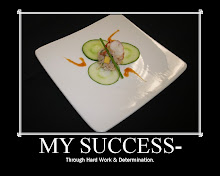The history of human cultivation of saffron can be traced back more than 3,500 years back. The cultivation of saffron has spanned across many cultures, continents, and civilizations. At the same time, saffron is considered to be the world’s most expensive spice at a whopping $3.49 to $9.28 per gram (United States Dollar). This spice has a long, long, long history all across the world. Originally, saffron is native to Southwest Asia but was first cultivated in Greece. It is not too known that saffron can been hazardous and deadly in larger quantities. Saffron is one of the world’s most loved spices.
Saffron has been talked discussed all through out history. Many ancient Egyptian records have told of stories of how Cleopatra would have saffron scented baths. In Rhodes a shipment of saffron worth $500,000, in today’s current market vaule, started a fourteen week war! The ruler Nero would order that the streets of Rome be speckled with saffron as he entered the city. Through out history many doctors have praised saffron for its medicinal properties.
Saffron’s flavor profile can be described as a bottom tone, a flavor that finishes. It is better described as a flavor that hit your senses towards the end of your bite. The actual flavor of saffron can be described of having the taste of bitter flowers. In turn, I feel it tastes a bit earthy like, not stale dirt but very smooth and rich. The fragrance can be described by saffron connoisseurs as “suggestive of metallic honey with grassy or hay-like notes, while its taste has also been noted as hay-like and somewhat bitter.”
You my reader may be thinking to yourself, “What is saffron a derivative from?” Saffron is a spice that comes from stigmas of the fall flowering Crocus Sativus plant, better known to the common man as the saffron crocus. The saffron crocus has been one of the world’s most distinguished and costly plants throughout almost every point in human history. A “thread” is the most common name for saffron’s individual red or yellow colored stigmas. In addition, these stigmas contribute an incandescent yellow-orange pallor to foods.
Also you may be asking, “Okay I get it, saffron costs a lot but why so?” To answer that question, we must first think of a few basic principles of economics one being supply and demand. When demand is low and supply is high, prices tend to be driven down, in order to purge out excess supplies. On the opposite side, when supplies are low and the demand for the product is high the product will have a high cost. This cost is not determined individually on weather; it is a raw material such as saffron, or a processed material such as a bag of Mahatbah Brand instant saffron rice.
The main factor in the equation of how much saffron cost lies mainly behind the production of it. On the current marketplace there is a lesser quantity of saffron available then the higher amount demanded by the consumers. The main explanation for why saffron production remains low is not due to greed. There are several saffron cultivators worldwide, each having their own trade names.
In Spain, the trade names ‘Spanish Superior’ and ‘Creme’ are very well-known. These plants are generally known for having a mellower color, flavor and aroma. The Italian varieties are famous for being slightly more pungent or heady then their Spanish counterparts. India is popular for its expensive saffron, partially due to recurring droughts and crop failures in Kashmir. In India, there is currently a ban on their producers from exporting and distributing their high-grade ‘boutique’ crops. In turn, the Kashmiri "Mongra" or "Lacha" saffron (Crocus sativus 'Cashmirianus'), is among the most difficult for consumers to get a hold of.
In America, the ancestors of the original German settlers, Dutch settlers, and the Pennsylvania Dutch, are known for continuing the tradition of cultivating their saffron. The Pennsylvania Saffron is known for its sharp earthy notes and is produced in small quantities. Farmers with tweezers go through very labor-intensive procedures to harvest the fragile stigmas of the saffron crocus.
Until later with a fun food based entry,
This is Jason Soko CC signing out,
Goodbye and Happy Cooking!
Friday, November 5, 2010
Monday, January 11, 2010
Hispanic Menu
Group One
Buffet Two
Hispanic Menu
Cold Platter
Chile Rubbed Pork Loin w/ Pork & Mango Mousse
Smokey Pork Terrine
Roasted Corn and Potato Salad
Pulled Pork Crostini
Cold Salads
Jicama Slaw w/ Mango & Pepper Medley
Chipotle & Roasted Chicken Salad
Hors d’oeuvres
Gazpacho Shooter w/ Yellow Heirloom Tomatoes
Quarter Pork Taco w/ Smoked Cheddar Cheese
*Flank Steak Fajita Wrapper
Hot Lunch Entrée
*Roasted Boneless Pork Chop
Saffron Rice & Black Beans w/ Fennel, Grape Tomato, Pepper Medley Con Fit
*This item is served raw, undercooked, or may contain undercooked ingredients.
Consuming raw or undercooked meats, poultry, seafood, shellfish, or eggs may increase your risk of foodborn illness.
Buffet Two
Hispanic Menu
Cold Platter
Chile Rubbed Pork Loin w/ Pork & Mango Mousse
Smokey Pork Terrine
Roasted Corn and Potato Salad
Pulled Pork Crostini
Cold Salads
Jicama Slaw w/ Mango & Pepper Medley
Chipotle & Roasted Chicken Salad
Hors d’oeuvres
Gazpacho Shooter w/ Yellow Heirloom Tomatoes
Quarter Pork Taco w/ Smoked Cheddar Cheese
*Flank Steak Fajita Wrapper
Hot Lunch Entrée
*Roasted Boneless Pork Chop
Saffron Rice & Black Beans w/ Fennel, Grape Tomato, Pepper Medley Con Fit
*This item is served raw, undercooked, or may contain undercooked ingredients.
Consuming raw or undercooked meats, poultry, seafood, shellfish, or eggs may increase your risk of foodborn illness.
Subscribe to:
Posts (Atom)
